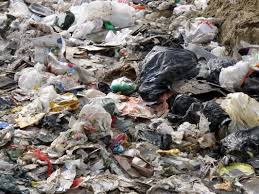In the modern world, we are surrounded by plastic. It is lightweight, has high strength and is easy to process, which is probably why it is seen in pretty much every aspect of today’s generation. Because they can be tough yet flexible, and permeable yet act as a barrier, it is very convenient to ignore all the red flags its environmental effects are raising. But there is only so long for which we can ignore all its harmful impacts on the ecosystem. It isn’t biodegradable, it’s derived from oil, and the chemicals it contains harm not only us but a large portion of marine life when we dispose of them. So what can we do? For starters, we can replace plastic with more eco-friendly alternatives.
- Glass: Some important reasons to consider glass as a substitute for plastic are that it is derived from sand instead of oil, so it is already a more environmental option. It does not melt in heat, and does not release dangerous chemicals like plastic does. After plastic became popular, glass jars in several household kitchens were prominently replaced but there are various good reasons why we should switch back.
- PLA Polyesters: PLA, or Polylactic acid is made by fermentation of corn starches. It is fused with polymers to form a plastic-like substance. Not only corn, but also wheat, sugarcane and potato can be used to create these polyesters, which have a large number of advantages over petroleum-based plastic. They do not any kind of toxic fumes on combustion, use 20-50% less fossil fuels and biodegrade within 47 days in an industrial composting site. Microorganisms that decompose can easily break the bonds between the polymers and lactic acid present in these polyesters to degrade them.
- PHA Polyesters: Certain kinds of bacteria can be cultured by being fed sugar to manufacture polyhydroxyalkanoate (PHA) polyesters which decompose within just twenty days. They are mostly found in packaging because they are slightly less flexible than petroleum-based plastics. If raw materials are sourced correctly then the slightly higher costs of production of these polyesters will pay themselves off and make PHA polyesters a great alternative.
- PCL Polyesters: Polycaprolactone is an aliphatic polyester (like PLA and PHA). Although it is not manufactured from renewable sources it degrades completely within six weeks. It has not been used too much because of its manufacturing costs but blending it with cornstarch can reduce the expenses. It is not as versatile an option as any aromatic polyester that we actually use to make stuff like water bottles, but since it degrades, PCL (and PLA and PHA) are being spent more time and effort on.
- Liquid Wood: A team of scientists in Germany took lignin, a part of wood that is not required in papermaking and combined it with natural fibres, resins and a number of other materials to create what has been named Arboform aka liquid wood. Been dubbed “the plastic of tomorrow”, it meshes the best qualities of plastic (durability, flexibility, etc.) with the recyclable and renewable advantages of wood. The best part of liquid wood is that more than one hundred million tonnes of the raw material required for its production are created simply as a by-product of an existing industry (the pulp industry).
- Reusable Shopping or Grocery Bags: A great way to reduce the amount of plastic we use in our daily lives is to carry our groceries in reusable shopping bags instead. Many shops hand them out for free or for a nominal fee. They are much more environment-friendly, now available in options other than just paper such as canvas, hemp, cloth, leather, nylon, etc. and are reusable too. As an added bonus, they come in various colours with all kinds of designs and patterns adorned on them.
- Casein from Milk: For mainly design purposes, casein, a protein in milk, can be used to produce polyester much like plastic, having a similar stiffness and compressibility. Although it is not the best to use for many other purposes, stuff such as jewellery can be made using this less toxic substance which degrades completely when placed in a dump.
Each of these substitutes is degradable or reusable and in some way or the other, way more environment-friendly than plastic. So why are we still using plastic everywhere? It is hard not to exploit the material which has several qualities that make it the ideal to use for many different purposes, but we need to start looking at it from a larger point of view. Current statistics indicate that out of 1 billion tonnes of plastic used in the US, only one percent gets recycled.
As of 2013, India reportedly generated 5.6 million metric tons of plastic waste annually. Delhi generated the most at 689.5 metric tons every day. Only sixty percent of the total plastic waste in India gets recycled. Steps are being taken to contain dumping of plastic waste and implement the ban on gutka – a popular stimulant consisting of crushed betel nut, chewing tobacco and other flavourings — in plastic pouches.



Leave a Reply